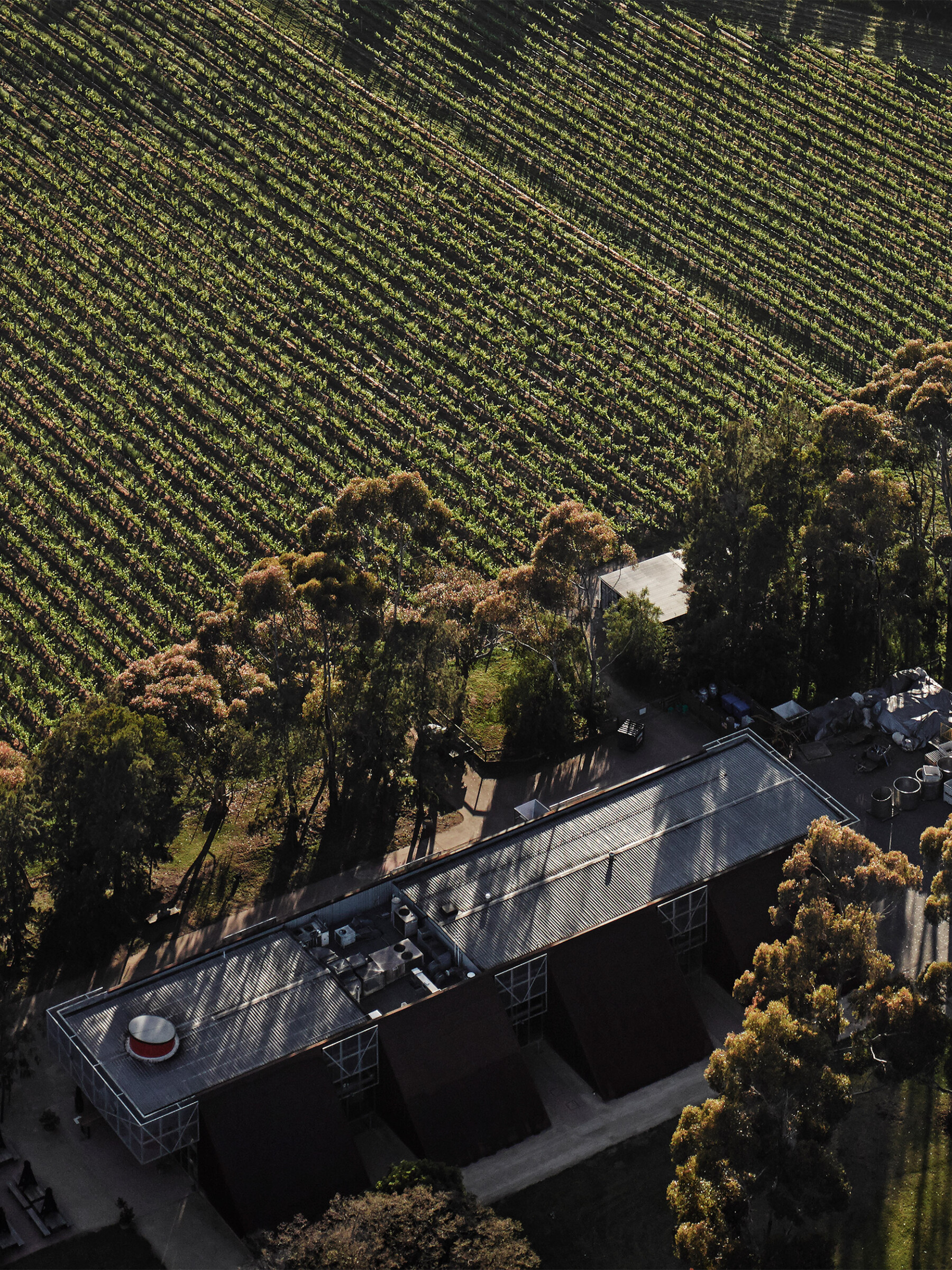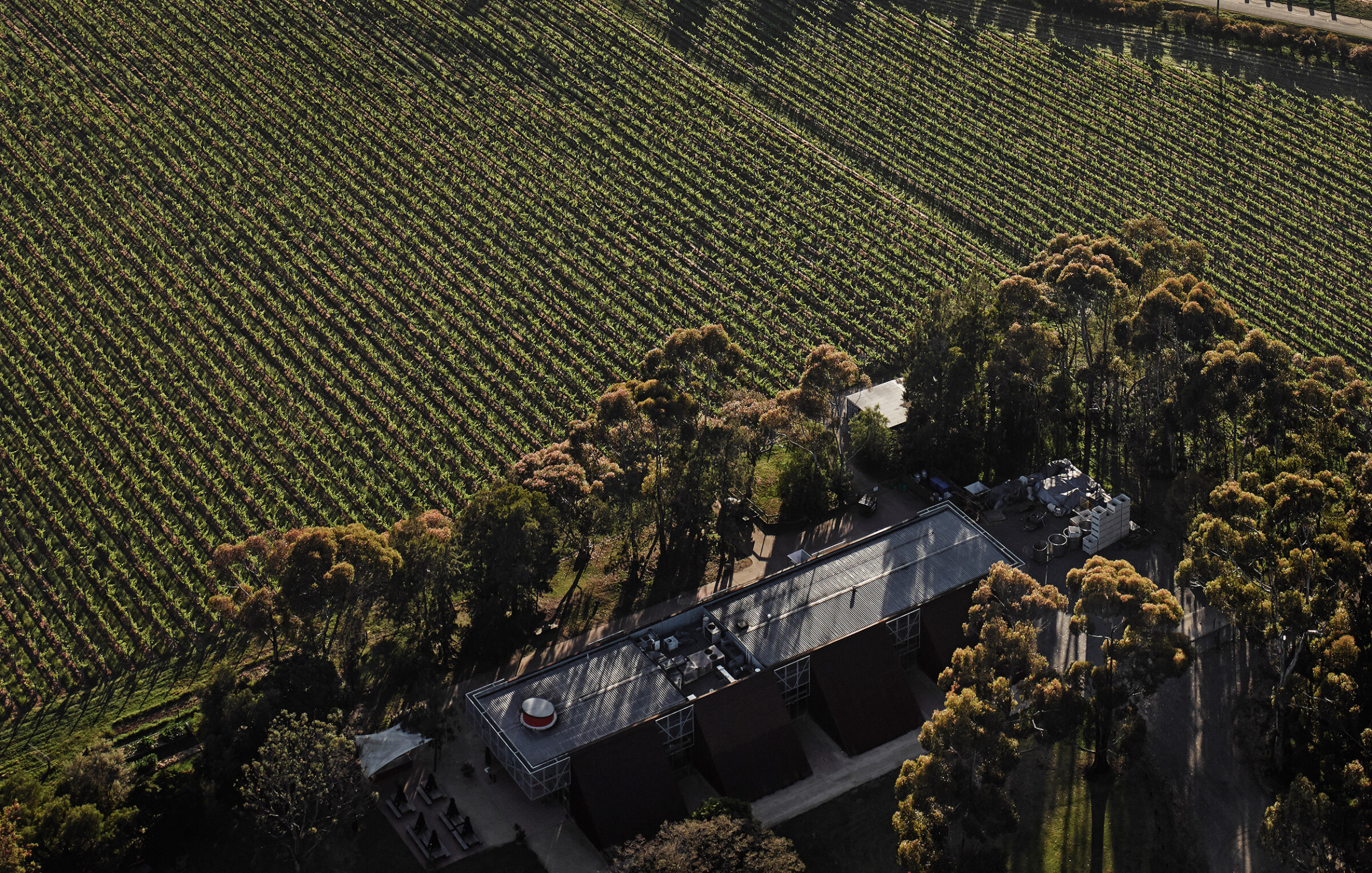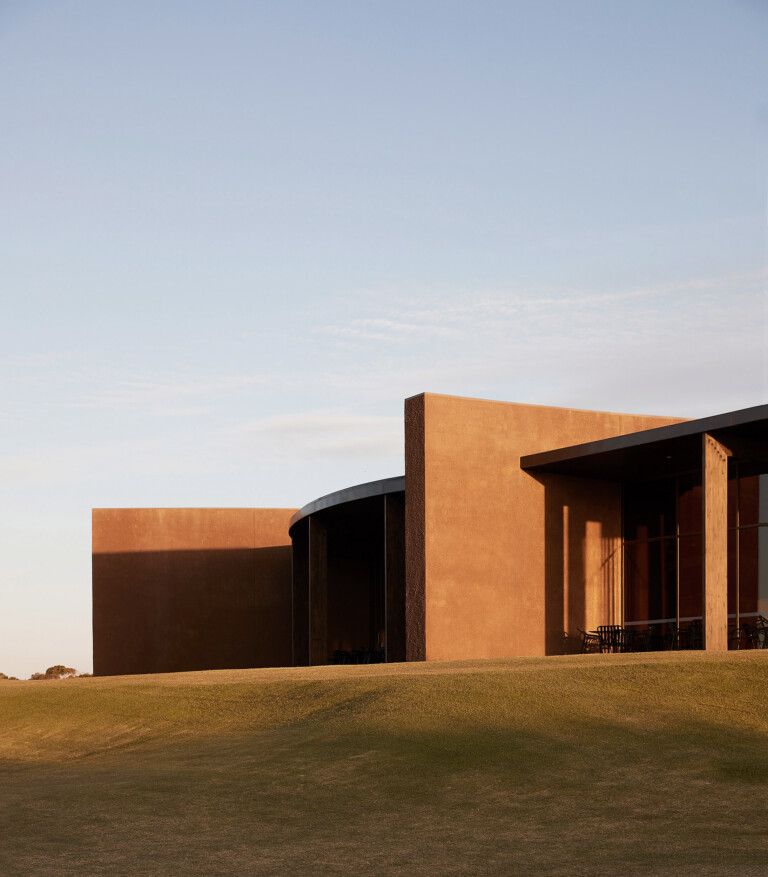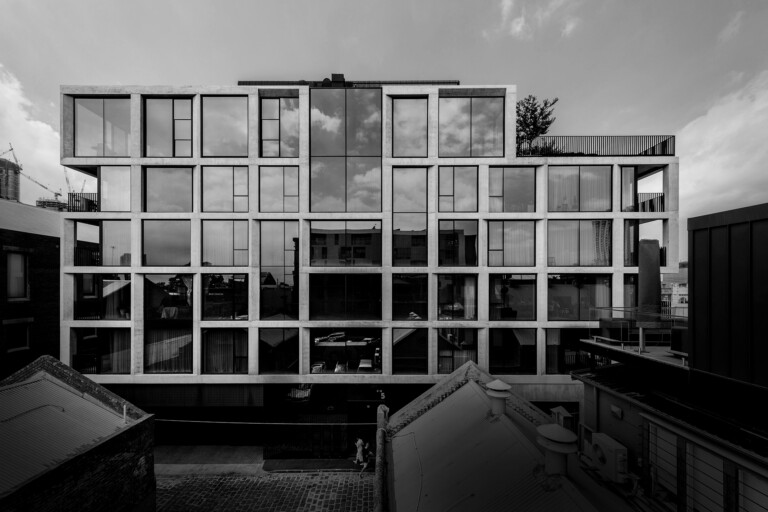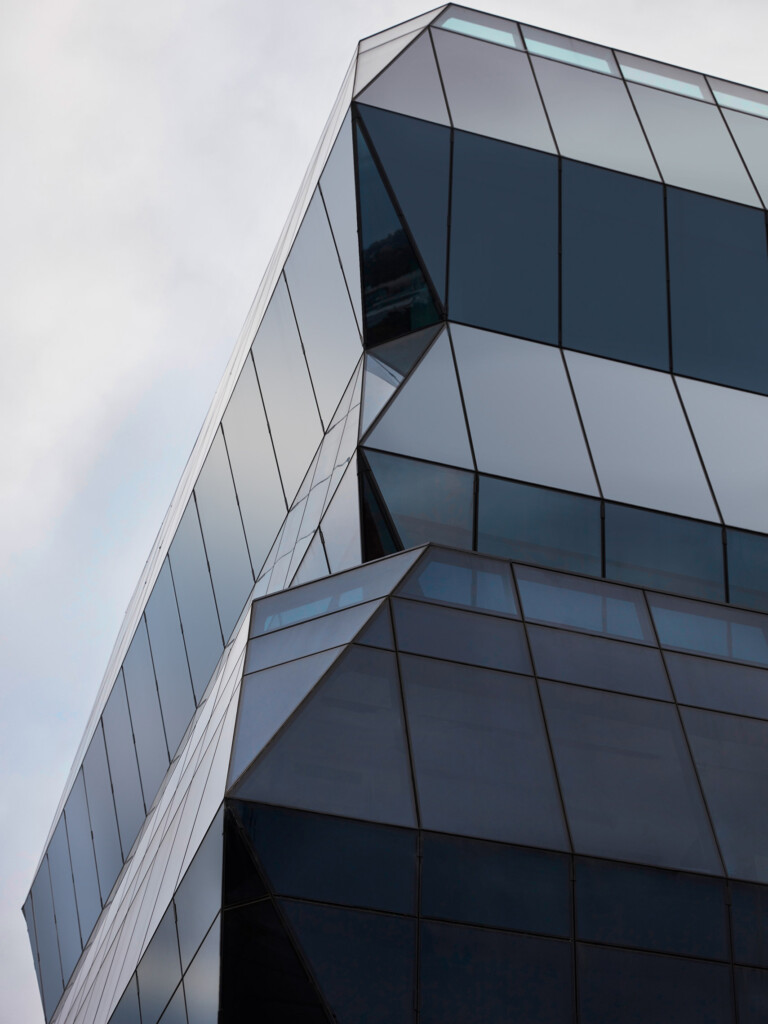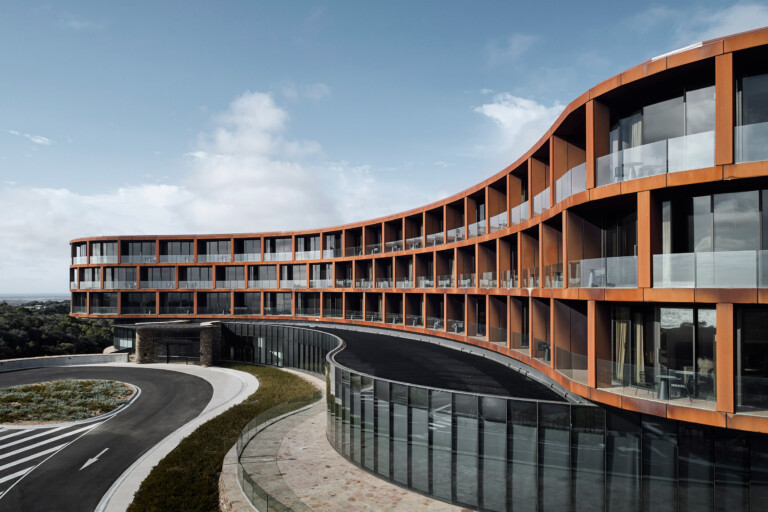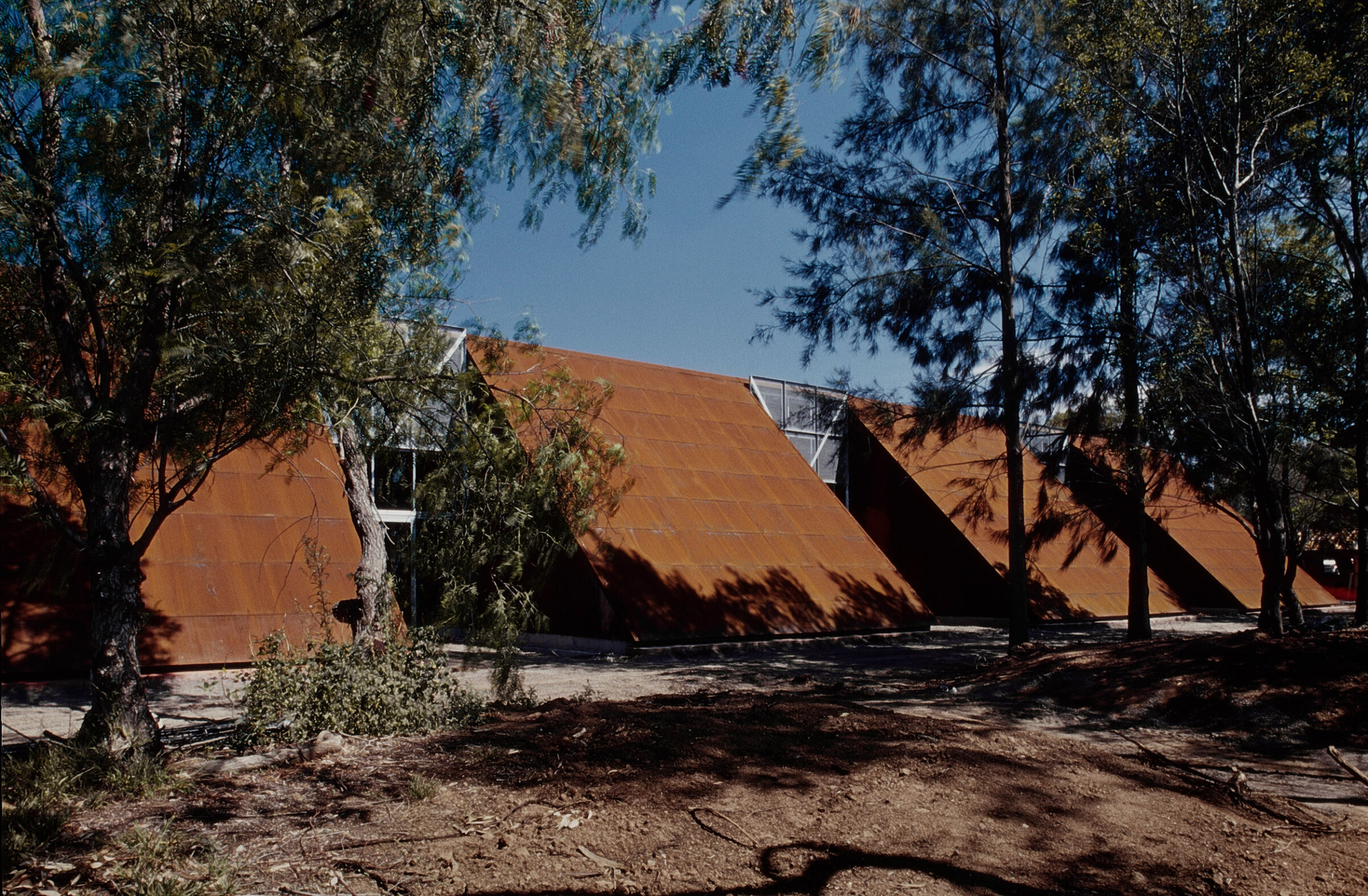
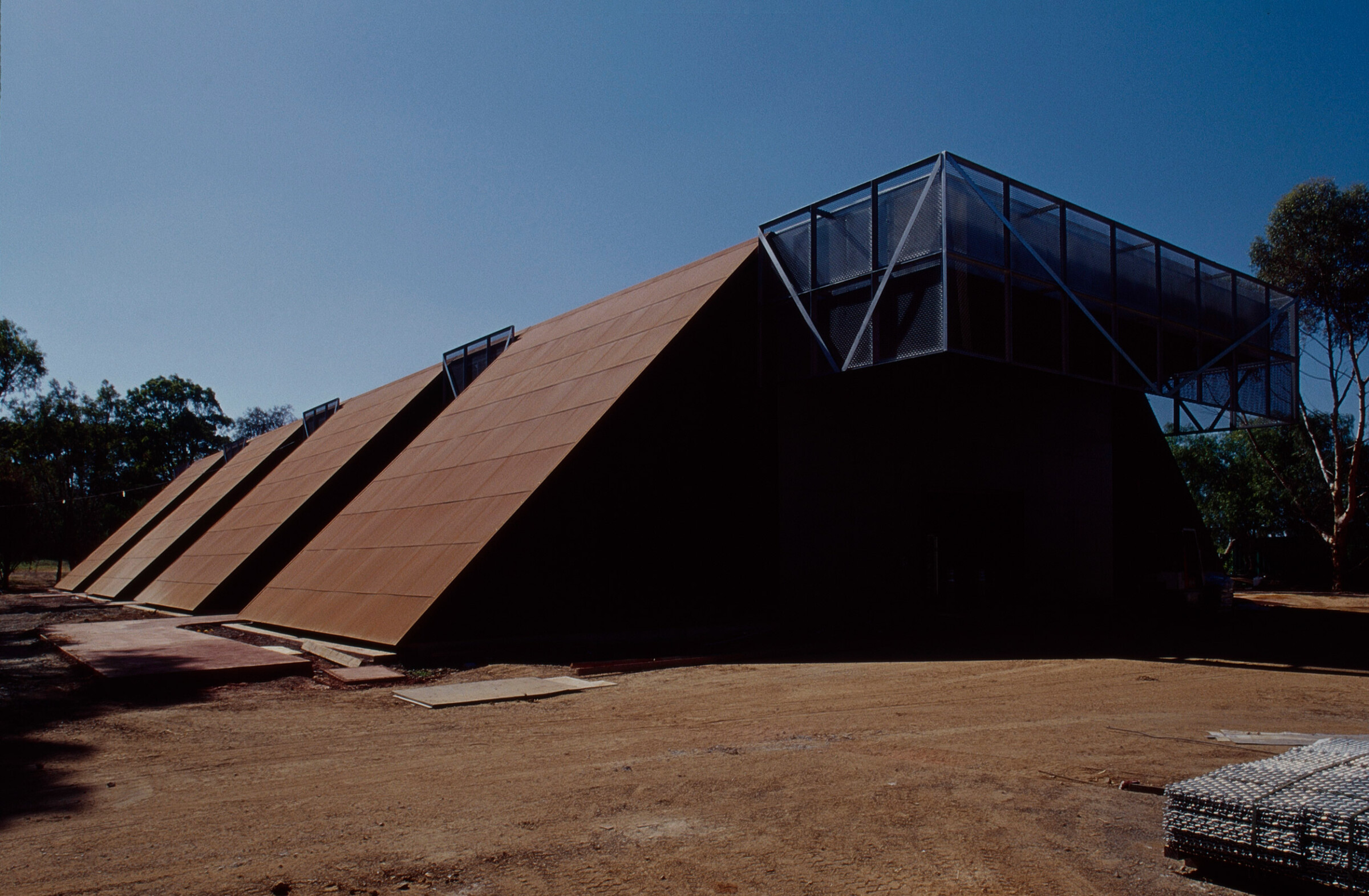
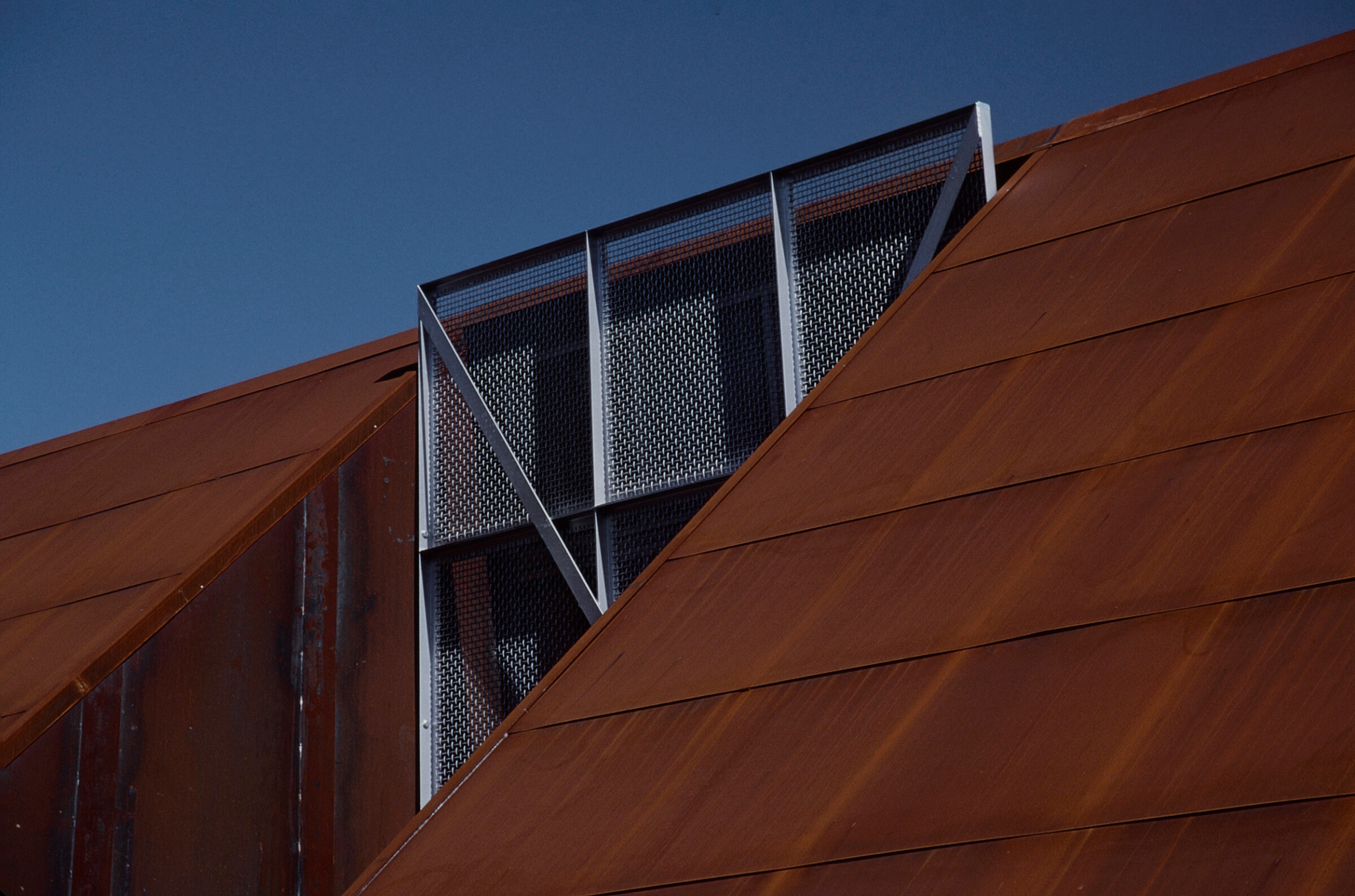
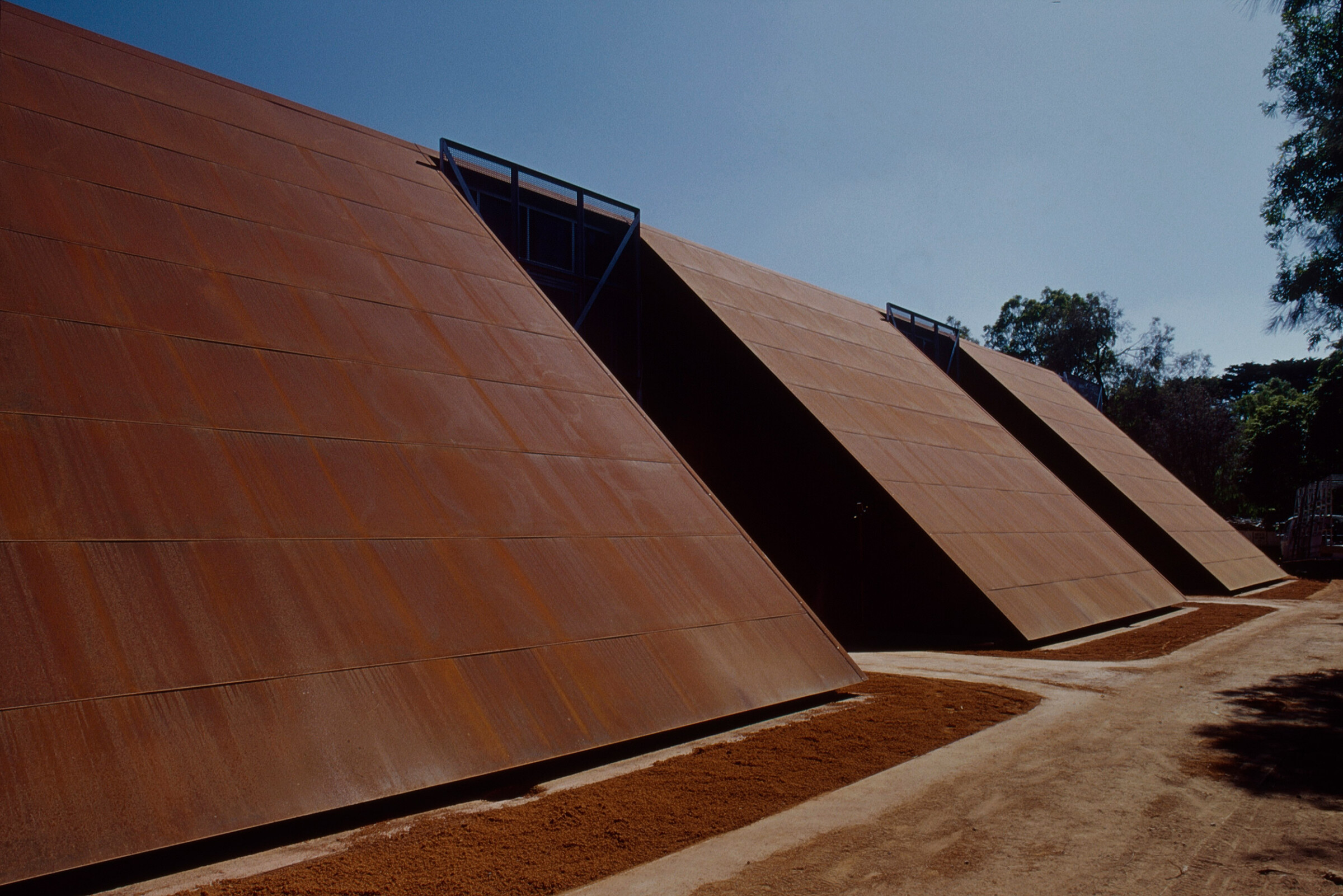
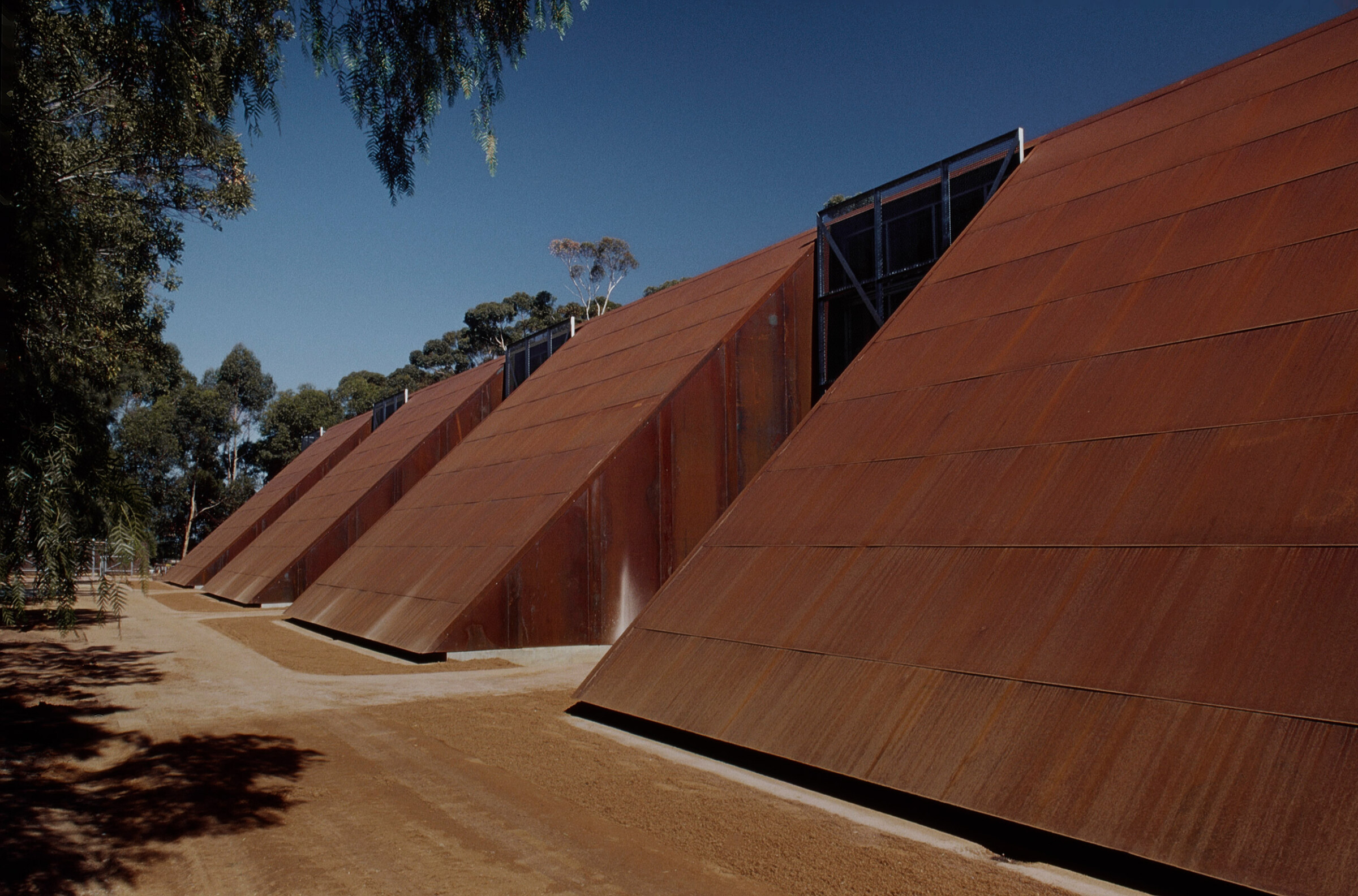
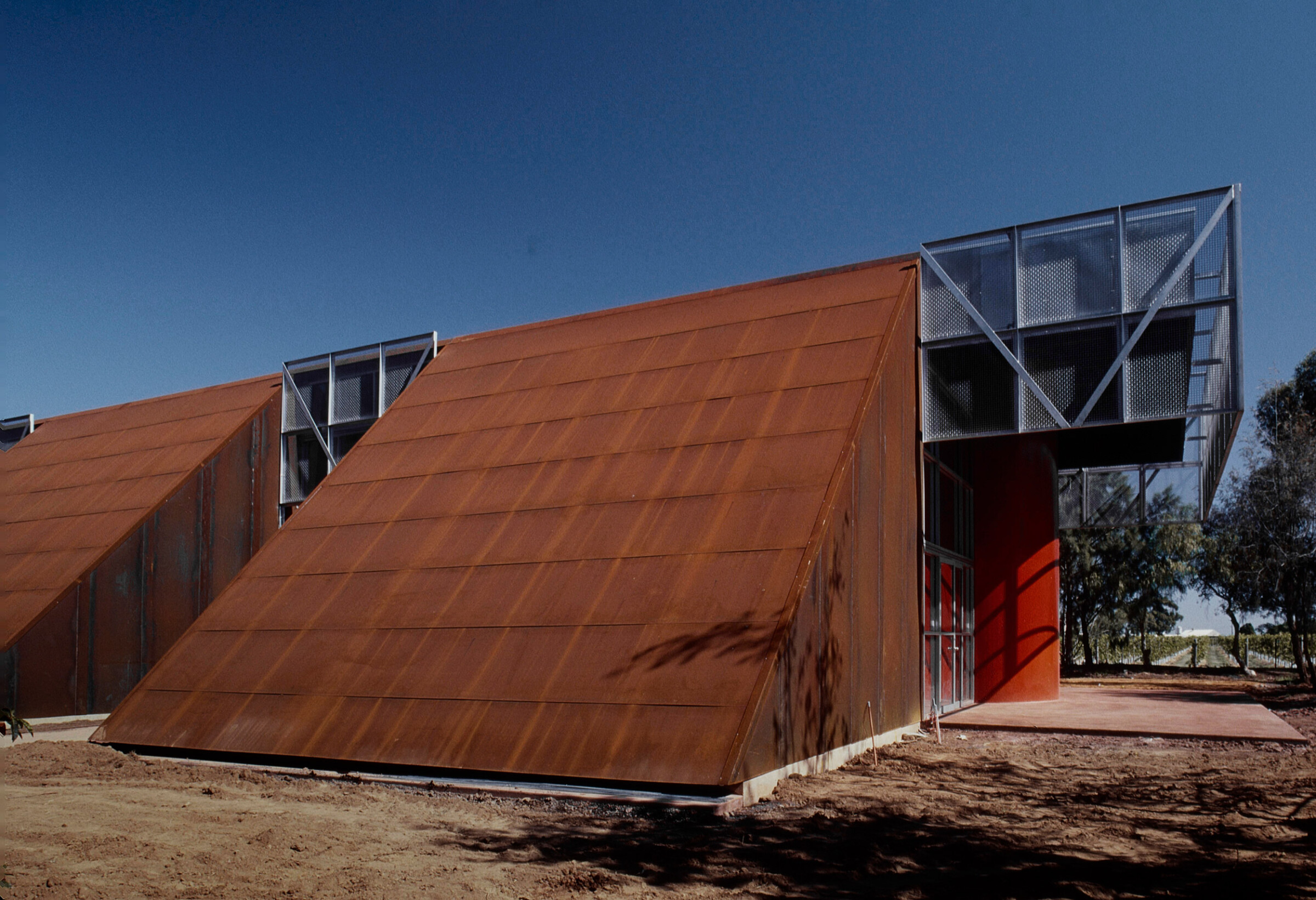
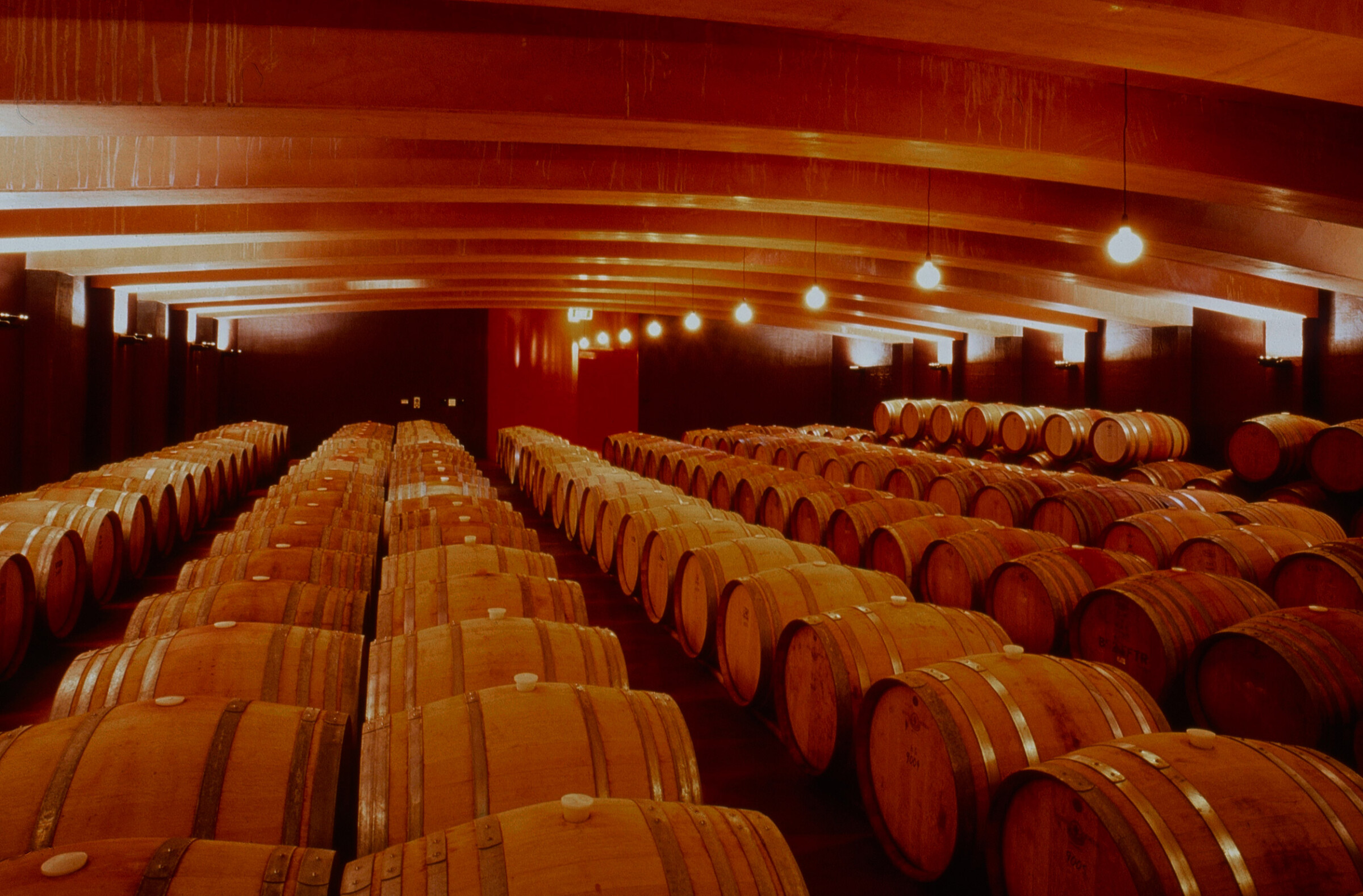
Shadowfax Winery
Utilising a simple linear plan, the Shadowfax Winery makes reference to topography in its colour texture and form. The unique aspects of the project’s program are distributed into separate volumes, emerging like mounds of earth roughly fashioned into consecutive piles. The interstitial space between the volumes is filled with a fragile glass counterpart offering glimpses to the vineyard and wine-making process as an internal organ.
The winery consists of four zones: a cellar door sales area, a production, packaging goods area, a service core and a basement barrel cellar. By indenting the plan, separate spaces are created adjacent to the central volume allowing complementary functions to be in close proximity to the areas they service without a visual or spatial disruption. The building plan offers a modular approach so that the program can expand in time.
In section, the bermed walls further inform these as secondary spaces. The northern end of the building has a large uninterrupted volume for cellar door sales which is the visitors’ main area. This is flanked on either side by the sales desk and deli section, both tucked into the berm volume.
The service core, positioned between the cellar door sales and production/packaged goods, provides acoustic and visual separation. Within this service core is a kitchen, tasting room, office, lab, and goods lift. Above, recessed within the roof is the plant area.
Progressing southward the production area is cruciform in plan. The spaces here are open providing workspace and storage space. The final zone is the packaged goods area, flanked by storage spaces and below and accessible at both ends is the barrel cellar.
